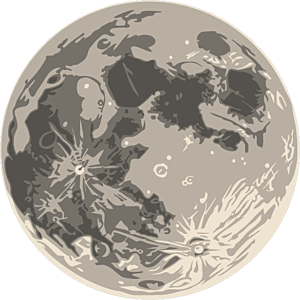The Downlink • Sep 15, 2023
Lost and found
Space Snapshot

The Moon is the most familiar planetary body to most people, other than the one we all live on. Yet our cosmic companion is always finding new ways to surprise us. With lunar research advancing all the time and human exploration setting its sights on the Moon, there are surely more discoveries in store for us. The latest issue of The Planetary Report, our quarterly magazine, is all about the Moon. Planetary Society members can opt to have a magazine delivered to their door, and anyone can read it online for free. Pictured: A piece of Moon rock collected by the crew of the Apollo 14 mission. Image credit: NASA.
You love space, now take action
This weekly newsletter is your toolkit to learn more about space, share information with your friends and family, and take direct action to support exploration. Anyone can subscribe at planetary.org/connect to receive it as a weekly email.
Mission Briefings


JWST has found methane and carbon dioxide in an exoplanet atmosphere. K2-18 b is an exoplanet 8.6 times as massive as Earth that lies about 120 light-years away, orbiting in its star’s habitable zone where surface liquid water could be possible. JWST’s new insights add to recent studies suggesting that K2-18 b could be a promising environment to search for evidence for life. Pictured: An artist’s impression of K2-18 b. Image credit: NASA, CSA, ESA, J. Olmsted (STScI).

Japan has launched a lunar lander. The SLIM (Smart Lander for Investigating Moon) spacecraft took off last week and will attempt a soft landing on the lunar surface in a few months, potentially making Japan the fifth country to land on the Moon. The launch also carried the XRISM (X-Ray Imaging and Spectroscopy Mission) space telescope, a collaboration between JAXA, NASA, and the European Space Agency.

Psyche is set for an October launch. The mission to the asteroid of the same name faced setbacks last year when it missed its launch window due to institutional issues at the Jet Propulsion Laboratory where it was being built. Psyche is back on track now, and is scheduled to launch sometime between Oct. 5 and Oct. 25.
From The Planetary Society


Voyager 2 was found, and Io lost its water. This week’s Planetary Radio unpacks two space exploration stories: how Voyager 2’s mission team reestablished contact with one of the most distant human-made objects, and how Jupiter’s early conditions may have stripped the moon Io of its water. Pictured: Dry, volcanic Io as seen by the Galileo spacecraft in 1997. Image credit: NASA/JPL/DLR.

Are you ready for the upcoming eclipses? If you live in North America you’re in for a celestial treat. In October, an annular eclipse will pass over the continent, followed by a total solar eclipse next April. In both cases, a partial eclipse will be visible from an even larger region. Make sure you’re ready by brushing up on your eclipse vocabulary, learning the do’s and don’ts of eclipse safety eyewear, and making a checklist of the astonishing phenomena you might get to witness.

Don’t let NASA lose its space exploration momentum. On Monday, Sept. 18, advocates from across the United States will be in Washington, D.C., for the Day of Action, meeting with their representatives in Congress to advocate for space. Learn how you can lend your support by taking action at home.
What's Up

Yellowish Saturn rises in the east around sunset, crossing the sky throughout the night. Jupiter shines super bright, rising in the east a bit later than Saturn. In the predawn, find Venus shining very bright, low in the east. Learn what else to look for in September’s night skies.
Wow of the Week

This magnificent piece of space artwork comes from planetary scientist and artist Jamie Molaro. Upon finishing her Ph.D. at the University of Arizona, which focused on how rocks weather and break down on the Moon, she used data from NASA’s Lunar Reconnaissance Orbiter to carve accurate, detailed lunar topography into her thesis, page by page. Learn more about this piece and its motivations in the September equinox issue of The Planetary Report.
Send us your artwork!
We love to feature space artwork in the Downlink. If you create any kind of space-related art, we invite you to send it to us by replying to any Downlink email or writing to [email protected]. Please let us know in your email if you’re a Planetary Society member!


 Explore Worlds
Explore Worlds Find Life
Find Life Defend Earth
Defend Earth


